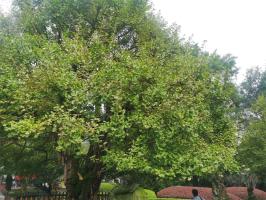Introduction
Climate change is one of the most pressing issues of our time, and planting trees has been proposed as a potential solution to reduce carbon emissions. With the goal of planting 1 trillion trees around the world, the question arises: how much would it cost? In this article, we will explore the factors involved in calculating the cost of planting 1 trillion trees.
The Cost of Planting Trees
The cost of planting trees varies widely depending on factors such as location, terrain, species, and planting method. In general, the cost of planting a single tree can range from a few cents to several dollars. However, when it comes to planting 1 trillion trees, the cost becomes astronomical.
According to a study conducted by researchers at the Swiss university ETH Zurich, the cost of planting 1 trillion trees would be approximately $300 billion. This estimate includes all expenses related to planting, such as seed collection, nursery costs, transportation, planting, and maintenance for the next 30 years.
Funding Sources
The challenge of funding such a massive reforestation effort is daunting, but there are potential sources of funding. Governments, corporations, and individuals could all contribute to the effort. One proposal is to establish a global fund for reforestation, which could be financed by governments, private donors, and international organizations.
Another source of funding could be through carbon offset markets. Companies and individuals purchase carbon offsets to counteract their carbon emissions, and the funds could go towards reforestation projects. The REDD+ program, for example, allows countries to receive payments for reducing emissions from deforestation and forest degradation.
Benefits of Planting Trees
Aside from the potential impact on reducing carbon emissions, planting 1 trillion trees would have numerous benefits. Trees provide habitats for wildlife, regulate water cycles, reduce soil erosion, and improve air quality. Reforestation efforts also have the potential to create jobs in the forestry and environmental sectors.
Furthermore, planting trees is one of the most cost-effective ways of mitigating climate change. According to a study published in Science, if we were to plant 1 trillion trees, it could sequester up to 205 gigatonnes of carbon from the atmosphere, equivalent to the past five decades of carbon emissions.
Conclusion
Planting 1 trillion trees may seem like an insurmountable task, but the benefits outweigh the costs. If we can find the funding sources, the potential impact on reducing carbon emissions and mitigating climate change could be immense. As individuals, we can also do our part by supporting local reforestation efforts and reducing our own carbon footprints.

 how many times do yo...
how many times do yo... how many planted tre...
how many planted tre... how many pine trees ...
how many pine trees ... how many pecan trees...
how many pecan trees... how many plants comp...
how many plants comp... how many plants can ...
how many plants can ... how many plants and ...
how many plants and ... how many pepper plan...
how many pepper plan...






























